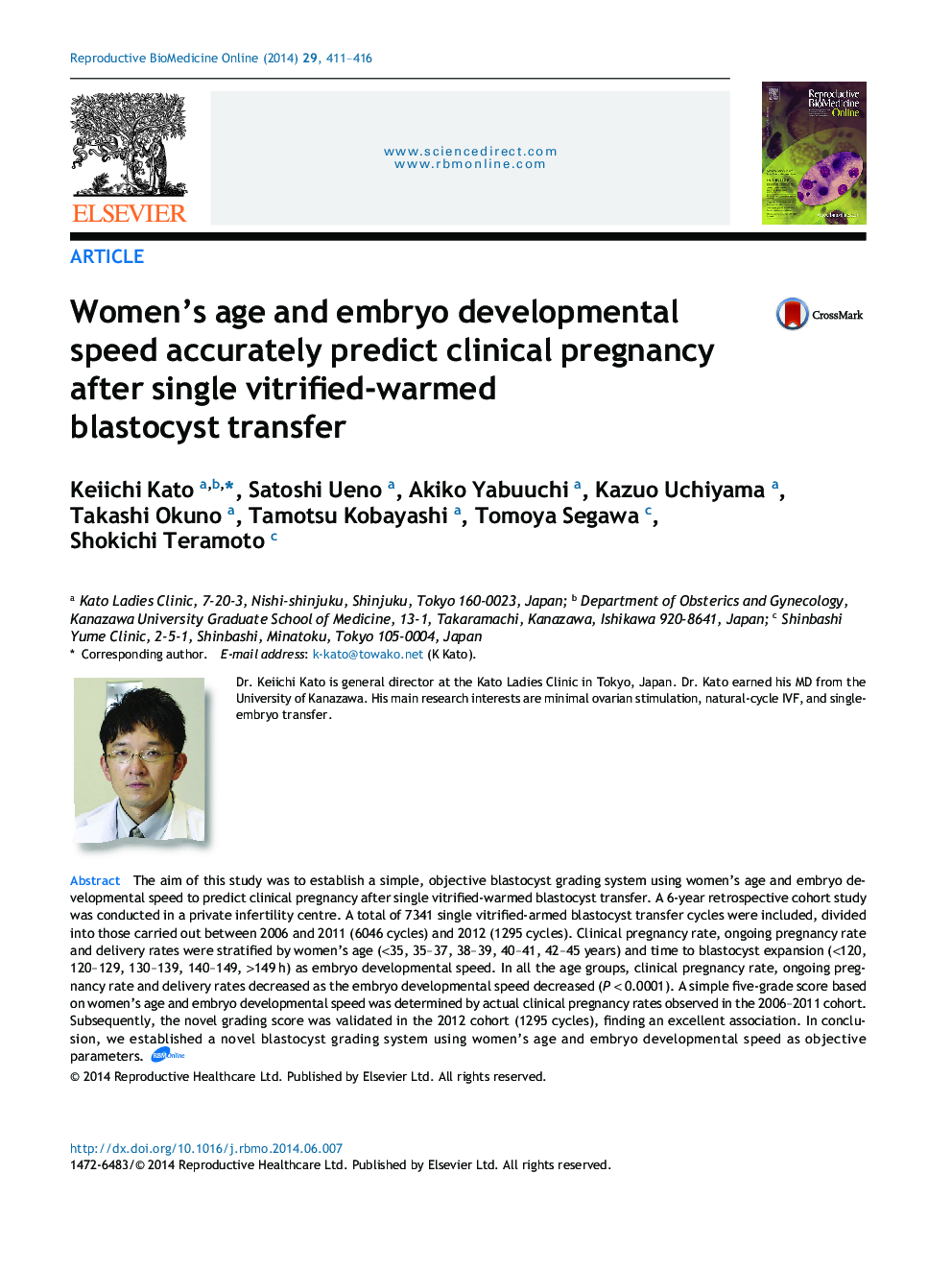| Article ID | Journal | Published Year | Pages | File Type |
|---|---|---|---|---|
| 6189095 | Reproductive BioMedicine Online | 2014 | 6 Pages |
The aim of this study was to establish a simple, objective blastocyst grading system using women's age and embryo developmental speed to predict clinical pregnancy after single vitrified-warmed blastocyst transfer. A 6-year retrospective cohort study was conducted in a private infertility centre. A total of 7341 single vitrified-armed blastocyst transfer cycles were included, divided into those carried out between 2006 and 2011 (6046 cycles) and 2012 (1295 cycles). Clinical pregnancy rate, ongoing pregnancy rate and delivery rates were stratified by women's age (<35, 35-37, 38-39, 40-41, 42-45 years) and time to blastocyst expansion (<120, 120-129, 130-139, 140-149, >149âh) as embryo developmental speed. In all the age groups, clinical pregnancy rate, ongoing pregnancy rate and delivery rates decreased as the embryo developmental speed decreased (P < 0.0001). A simple five-grade score based on women's age and embryo developmental speed was determined by actual clinical pregnancy rates observed in the 2006-2011 cohort. Subsequently, the novel grading score was validated in the 2012 cohort (1295 cycles), finding an excellent association. In conclusion, we established a novel blastocyst grading system using women's age and embryo developmental speed as objective parameters.
